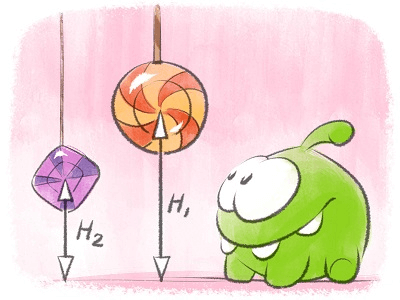The hero of the Cut the Rope game is a little monster named Om Nom. He loves candies. And what a coincidence! He also is the hero of today’s problem.

One day, Om Nom visited his friend Evan. Evan has n candies of two types (fruit drops and caramel drops), the i-th candy hangs at the height of h i centimeters above the floor of the house, its mass is m i. Om Nom wants to eat as many candies as possible. At the beginning Om Nom can make at most x centimeter high jumps. When Om Nom eats a candy of mass y, he gets stronger and the height of his jump increases by y centimeters.
What maximum number of candies can Om Nom eat if he never eats two candies of the same type in a row (Om Nom finds it too boring)?
Input
The first line contains two integers, n and x (1 ≤ n, x ≤ 2000) — the number of sweets Evan has and the initial height of Om Nom’s jump.
Each of the following n lines contains three integers t i, h i, m i (0 ≤ t i ≤ 1; 1 ≤ h i, m i ≤ 2000) — the type, height and the mass of the i-th candy. If number t i equals 0, then the current candy is a caramel drop, otherwise it is a fruit drop.
Output
Print a single integer — the maximum number of candies Om Nom can eat.
Examples
input
5 3
0 2 4
1 3 1
0 8 3
0 20 10
1 5 5
output
4
Note
One of the possible ways to eat 4 candies is to eat them in the order: 1, 5, 3, 2. Let’s assume the following scenario:
- Initially, the height of Om Nom’s jump equals 3. He can reach candies 1 and 2. Let’s assume that he eats candy 1. As the mass of this candy equals 4, the height of his jump will rise to 3 + 4 = 7.
- Now Om Nom can reach candies 2 and 5. Let’s assume that he eats candy 5. Then the height of his jump will be 7 + 5 = 12.
- At this moment, Om Nom can reach two candies, 2 and 3. He won’t eat candy 2 as its type matches the type of the previously eaten candy. Om Nom eats candy 3, the height of his jump is 12 + 3 = 15.
- Om Nom eats candy 2, the height of his jump is 15 + 1 = 16. He cannot reach candy 4.
Solution:
#include <cstring>
#include <vector>
#include <list>
#include <map>
#include <set>
#include <deque>
#include <stack>
#include <bitset>
#include <algorithm>
#include <functional>
#include <numeric>
#include <utility>
#include <sstream>
#include <iostream>
#include <iomanip>
#include <cstdio>
#include <cmath>
#include <cstdlib>
#include <ctime>
#include <memory.h>
#include <cassert>
using namespace std;
const int N = 123456;
vector < pair <int, int> > a[2];
bool b[2][N];
int sz[2];
int main() {
int n, x;
scanf("%d %d", &n, &x);
for (int i = 0; i < n; i++) {
int foo, bar, qwe;
scanf("%d %d %d", &foo, &bar, &qwe);
a[foo].push_back(make_pair(bar, qwe));
}
int ret = 0;
for (int start = 0; start < 2; start++) {
for (int t = 0; t < 2; t++) {
sz[t] = a[t].size();
for (int i = 0; i < sz[t]; i++) {
b[t][i] = true;
}
}
int t = start;
int ans = 0;
int jump = x;
while (true) {
int mx = -1, km = -1;
for (int i = 0; i < sz[t]; i++) {
if (b[t][i] && a[t][i].first <= jump) {
if (a[t][i].second > mx) {
mx = a[t][i].second;
km = i;
}
}
}
if (km == -1) {
break;
}
b[t][km] = false;
jump += mx;
ans++;
t = 1 - t;
}
if (ans > ret) {
ret = ans;
}
}
printf("%d\n", ret);
return 0;
}

